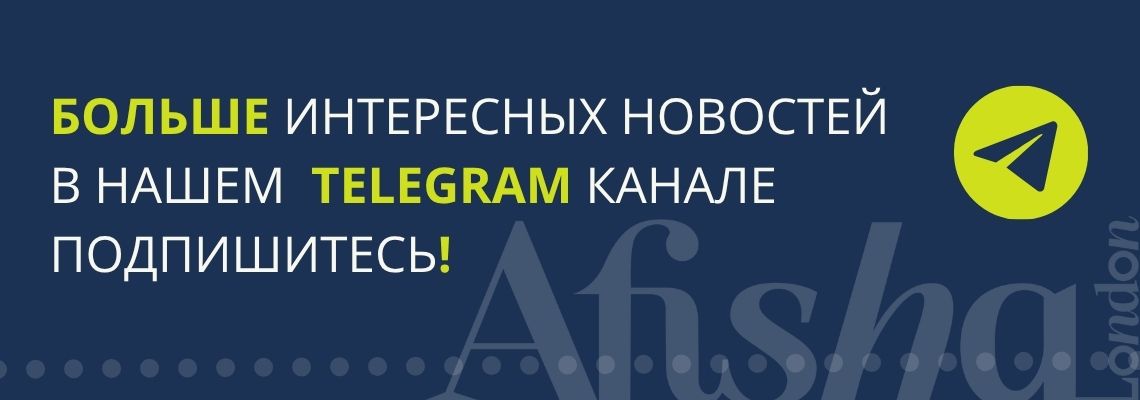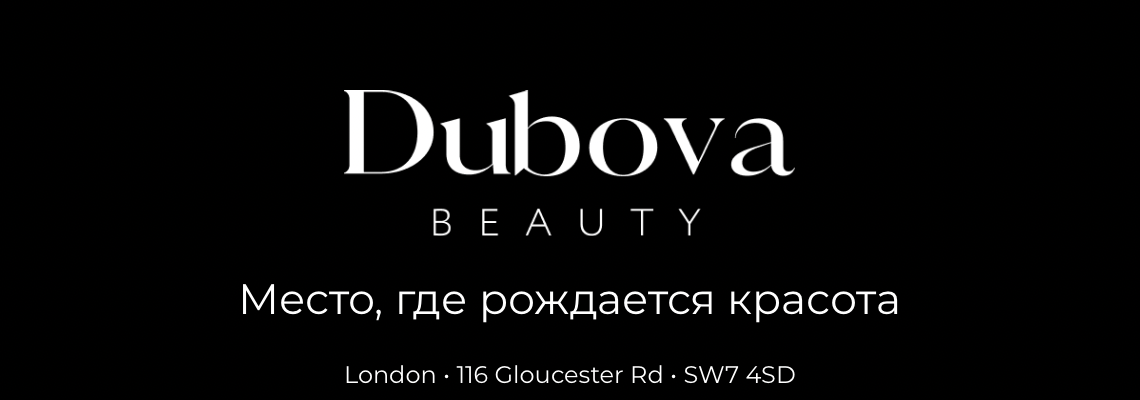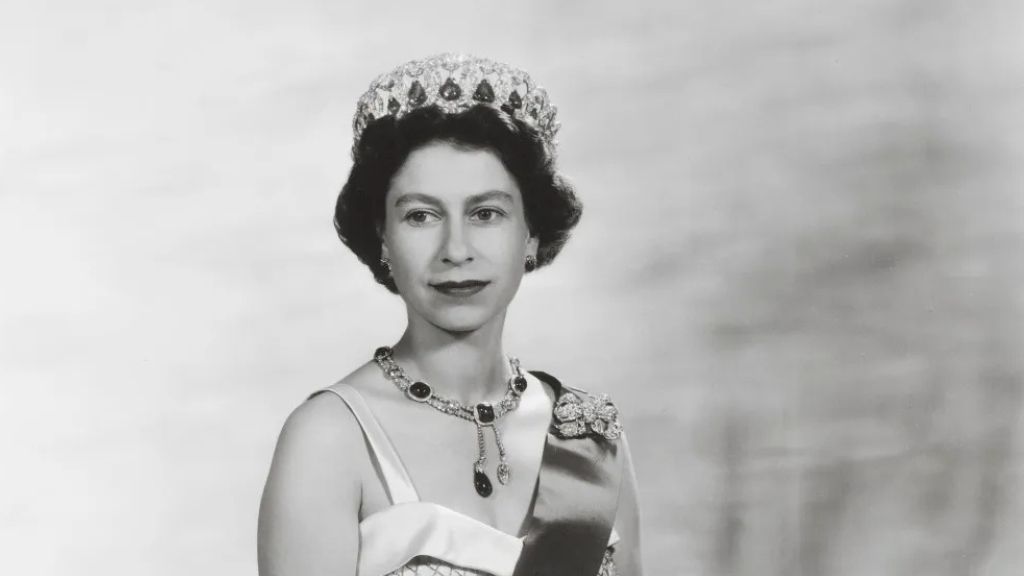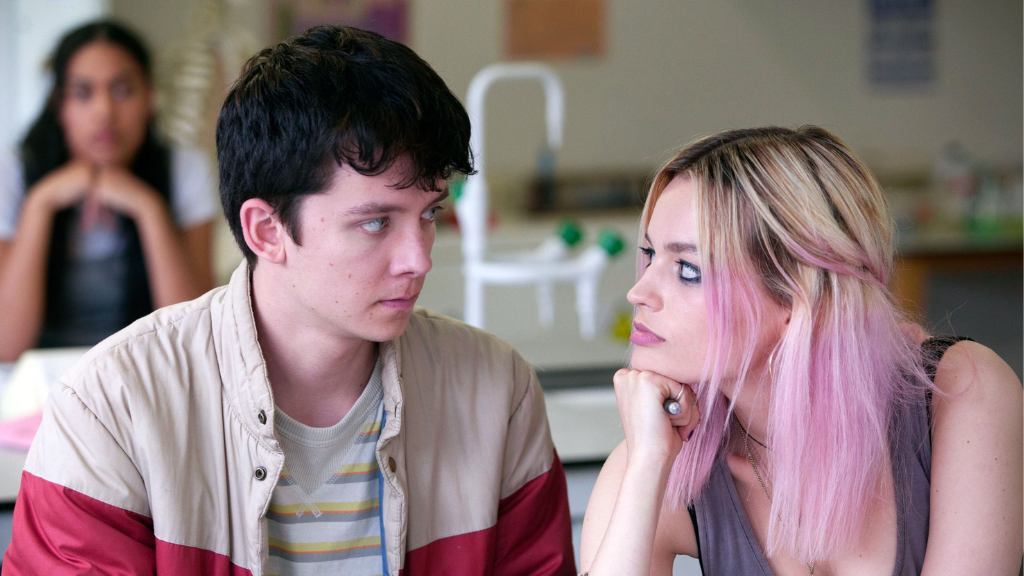
Sex Education in Schools: Myths and Realities
Should schools address issues of sex, relationships, and personal boundaries with teenagers? This topic ignites passionate debates among adults worldwide. Some argue that such lessons empower children to make informed choices and protect their health, while others worry it may corrupt them and encourage premature sexual activity. Different countries adopt various approaches based on cultural, social, and political factors. Afisha.London explores the history of sex education, compares its implementation in schools across the UK and Russia, and dispels common myths.
The History of Sex Education
Discussions about sex education first emerged in the late 19th century when society faced issues such as sexually transmitted infections (STIs) and teenage pregnancies. During this period, the focus was on condemning “immoral behaviour” and upholding moral values, while sexuality remained a taboo subject.
In 1913, Chicago made its first attempt to introduce sex education into the secondary education system. Ella Flagg Young, the head of Chicago schools, developed a programme that included lectures on personal hygiene, sexual instincts, and sexually transmitted diseases. However, the course lasted only a year before being discontinued due to pressure from conservative society.
Following World War II, attitudes towards sex education began to shift. Influenced by scientific research, it became evident that sexuality is a fundamental aspect of human life. Nevertheless, schools continued to focus on anatomical aspects and the idea of abstinence until marriage. In 1955, Sweden became the first country to introduce sex education as a compulsory part of the school curriculum, establishing a precedent that other nations would later follow.
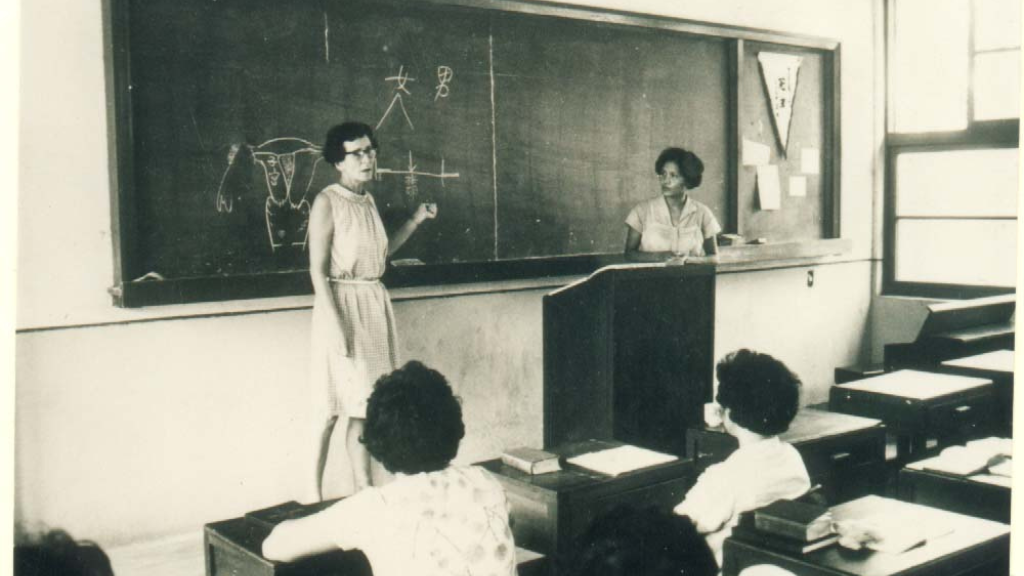
Dr. Jean Murray Landsborough teaches a public health class in Taiwan, 1955. Photo: See page for author, Public domain, via Wikimedia Commons
The sexual revolution of the 1960s and 70s transformed societal attitudes towards sexuality. During this period, many countries implemented programmes addressing contraception, women’s rights, sexual orientation, and equality. By the 1980s and 90s, the rapid spread of HIV/AIDS made sex education crucial, prompting schools to address the prevention of sexually transmitted infections (STIs).
In the modern world, sex education has become more comprehensive, covering topics such as consent, gender identity, mental health, and personal boundaries. International organisations like UNESCO and WHO have developed standards and guidelines for comprehensive sex education, emphasising its importance for youth health and well-being. However, approaches still vary widely across countries.
Read also: Emmeline Pankhurst in St. Petersburg: The Suffragette Movement in Britain and Russia
Sex Education in the UK
In England, sex education is a mandatory part of the school curriculum. In 2019, the UK government updated the guidelines, introducing compulsory lessons on relationships, sexual health, and personal safety for all students in England.
Olga Marey, clinical psychologist and sexologist, shares her professional view on sex education in the UK:
“I appreciate that sex education lessons here are held with both girls and boys present. I believe it’s extremely important for children to learn about the anatomy of the opposite sex — it helps prevent mockery in the future and fosters an understanding that bodily changes are completely normal for everyone, and that each gender goes through its own physical challenges.”
In primary school, relationship education equips children with a comprehensive understanding of healthy relationships, including the expression of personal boundaries and the respect for those of others, internet safety, and the ability to distinguish between appropriate and inappropriate contact. Health education covers topics such as puberty, including menstruation, even prior to these changes occurring, and addresses both physical health and mental well-being.
In secondary school, the curriculum addresses a broader range of essential topics, including contraception methods, STIs prevention, rights and responsibilities in sexual relationships, sexual exploitation, cyberbullying, coercion, harassment, domestic violence, and the potential impacts of these issues on current and future relationships. Mental health subjects are also incorporated, aiding young people in recognising and coping with personal challenges while teaching them how to seek support.
The sexologist also warns about the dangers of certain content and online communication:
Invalid slider ID or alias.“Parents are increasingly concerned about the kind of content their children are exposed to online – including anonymous chats through video games or social media. And rightly so. Adults with clearly deviant sexual interests can easily pretend to be peers. This kind of interaction is extremely dangerous, especially because it almost never starts with an overtly sexual conversation.”
These lessons are inclusive, covering same-sex relationships and various aspects of sexual orientation and gender identity, promoting tolerance and acceptance. Parents have the right to withdraw their children from sex and contraception lessons (RHSV) but not from relationship education (RSV). However, once students reach the age of 15, they can choose for themselves whether to attend these classes.

Photo:Tima Miroshnichenko / Pexels
Sex Education in Russia
The situation in Russia is drastically different. There is no unified, mandatory sex education programme at the state level, and topics related to sexual education are addressed within life safety classes or biology. Such lessons are often limited to discussions of anatomy and reproductive functions.
Sexuality-related topics often ignite debates and controversies within Russian society. Numerous parents and teachers maintain conservative views, believing that sex education should be addressed within the family. As a result, teenagers frequently lack trustworthy information about their bodies and healthy sexual and interpersonal interactions.
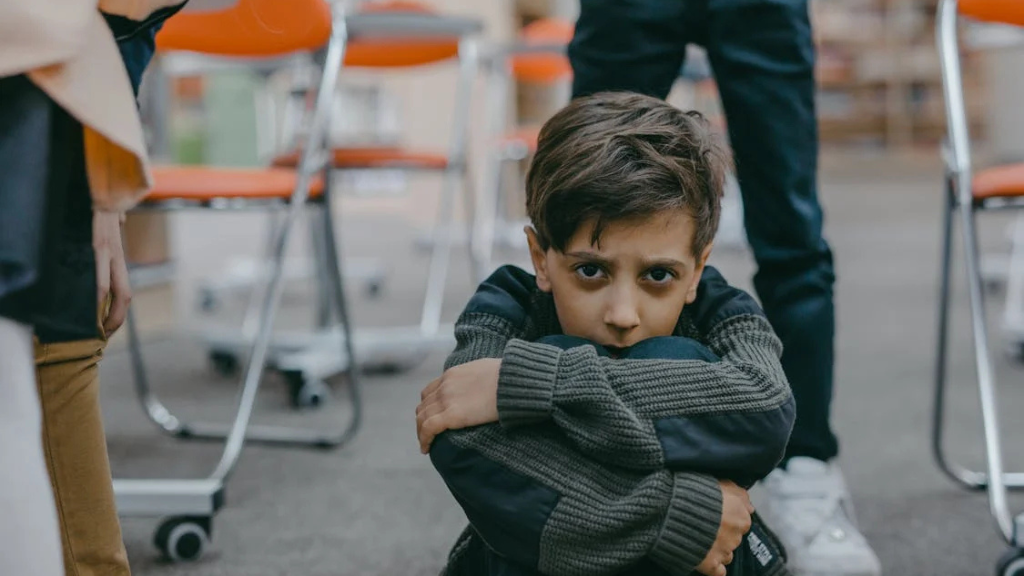
Photo: Mikhail Nilov / Pexels
Critics argue that this lack of information fosters the spread of myths about sex, an increase in unwanted teenage pregnancies, and a rise in sexually transmitted infections; they are largely correct – but more on that later.
We asked Alexandra Ivanova, an English teacher from St. Petersburg and mother of two sons, aged 10 and 16, to share her personal experience in this area:
“The school didn’t provide us with any information. Since children have access to mobile phones from around the age of eight – and not all parents take steps to ensure content safety – many of them are exposed to explicit content already in primary school. For example, my son, who attends a good school in central St Petersburg, first saw this kind of content at age 11, during a school break on a classmate’s phone, and then they started watching it regularly. I don’t see anything good in this, but I also understand how difficult it is to shield a child from the realities of the world around us. Fortunately, by that point my son had already received the basics of sex education at home: we always spoke openly about these topics and read age-appropriate books together. I believe such conversations should start as early as possible – it’s a key to safety and health.
As for the school curriculum, I would include the following topics: body awareness and safety, physical changes during adolescence, the beginning of sexual life, sexually transmitted infections, pregnancy and contraception, as well as gender identity and people of non-traditional sexual orientation (as it’s commonly called here). But in our country this is absolutely unrealistic – currently, it’s equated with so-called LGBT propaganda, which is banned by law.”
Myths
Despite the proven effectiveness of sex education, numerous myths persist, obstructing the adoption of these programmes. Let us debunk some of the most common misconceptions, as outlined by UNFPA – the United Nations agency for sexual and reproductive health.
1. “Sex education encourages early sexual activity”: One of the most prevalent myths is that discussing sex prompts teenagers to engage in sexual activity at an earlier age. In reality, studies demonstrate the contrary – informed teenagers tend to become sexually active later and make more thoughtful choices.
This view is shared by sexologist Olga Marey:
“Most parents of teenagers are primarily concerned that their children might start having sex too early. However, research shows that proper and timely sexual education actually leads to a later onset of sexual activity. What do we mean by ‘proper education’? It means age-appropriate knowledge, based on a child’s developmental stage – not self-education through erotic or pornographic websites, or through equally misinformed peers.”
2. “Children are too young for such knowledge”: Sex education programmes are tailored to be suitable for their age. As mentioned earlier, at younger stages, the focus is on respecting personal boundaries and understanding one’s own body, whilst sexual aspects are addressed later.
“When parents come to me, the main question they ask is how and when to talk to their children about sex. However, in my opinion, this is not at all what children are concerned with until a certain age. What’s more, children don’t even attach the same emotional meaning to the word ‘sex’ as we do. Often, when they ask ‘where do babies come from,’ it is more of a biological curiosity – asking how exactly babies are made: how one cell meets another, how it enters the body, how it develops, and how from this, a person eventually emerges,” says the sexologist.
3. “Abstinence is more effective than comprehensive sex education”: The negative consequences of abstinence-only education are well-documented. It does not reduce rates of teenage pregnancy, HIV, or other infections. Individuals taught to practise abstinence are less likely to use contraception and experience higher rates of out-of-wedlock pregnancies.
4. “Sex education undermines family values”: On the contrary, it complements family upbringing by providing teenagers with the opportunity to discuss complex questions with parents and teachers in a safe environment.
“As for family conversations, I think parents will always be hindered by their own deep embarrassment on this topic,” reflects Olga Marey. “Children are very sensitive to our shame. But we need to learn to overcome it (sometimes, perhaps, by openly admitting how awkward it is to talk about certain things, we set a good example for our children). It’s important to always leave an ‘open door’ for such conversations – for example, reading books together, rather than simply handing them to children.
However, in my opinion, the primary focus, regardless of age, should be on the emotional relationship the child will have with their future partner, the importance and ability to refuse unwanted actions, and reminding them about the importance and inviolability of their own body if they don’t want something. These conversations give the child a chance to consider you the best person to talk to when they face a difficulty or problem they need to share.”
5. “It promotes non-traditional views”: Sex education programmes aim to deliver objective information, empowering young people to make informed decisions while encouraging acceptance of diverse orientations, expressions, cultures, and beliefs.
Read also: The Baroness with a brush: how Russian émigré Tamara de Lempicka conquered the art world
6. “Family education is sufficient”: Not all families are prepared for open discussions on sensitive issues. Formal education provides structured, scientifically-based information.
7. “Sexuality is irrelevant to children”: This is one of the most misguided myths among parents. Sexuality is inherently present throughout a person’s life and is an integral part of human nature. Sex education helps children in understanding their bodies, emotions, family life, relationships, principles of consent, and what to do if they encounter abuse or mistreatment.
In Comparison
Cultural and historical factors influence the differences in approaches to sex education in the UK and Russia. The UK adopts an open and inclusive stance, acknowledging the importance of informing students. In Russia, silence prevails, implying that sex education is regarded as a family or personal issue.
Read also: Sustainable Technology: The Restart Project
Research indicates that countries with comprehensive sex education programmes report improved outcomes in adolescent knowledge and attitudes towards sexual and reproductive health. Informed teenagers take personal safety more seriously. Studies show that the teenage pregnancy rates in the UK are half those in Russia. Furthermore, approximately 0.17% of the UK population is HIV-positive, compared to 1.5% in Russia. The rates of other STIs are also considerably lower.
Invalid slider ID or alias.
Conclusion
Sex education plays a vital role in fostering responsible attitudes towards health, personal boundaries, and interpersonal relationships. It enables young people to understand physiological processes, respect personal boundaries, recognise the significance of consent, and acquire information about the risks associated with sexual activity. The differing approaches of the UK and Russia illustrate contrasting views on the role of schools, families, and society in providing knowledge about this sensitive topic. Russia’s concerning statistics in comparison to the UK underscore the failures of myths about sex education and the consequences of silencing the natural instincts of the younger generation rather than promoting openness and education.
Cover photo: a still from the series Sex Education / Netflix
Read also:
Classical Music in Cinema: The Stenography of Emotion
Winston Churchill: descendant of a pirate, impressionist and husband to the perfect wife
SUBSCRIBE
Receive our digest once a week with quality Russian events and articles
